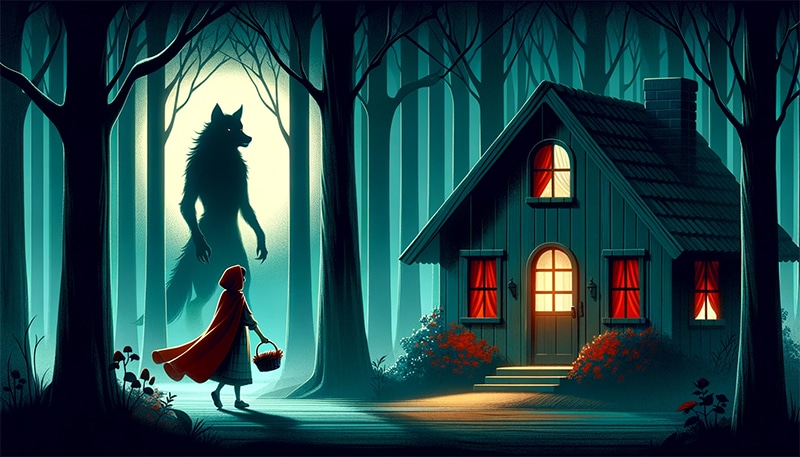1-Minute Summary of Little Red Riding Hood (Short Plot Overview)
Do you remember the classic fairy tales that filled our childhood with wonder, caution, and lessons? Little Red Riding Hood was one such story for me and countless others. Looking for a short summary of the Brothers Grimm – and most popular – version of the plot? Here it is.
For more quick and easy book summaries, check out our hub.
Short Summary of Little Red Riding Hood
In a serene village lives a young girl affectionately known as Little Red Riding Hood, owing to the red hood she always wears. One sunny day, her mother hands her a basket filled with treats, instructing her to deliver it to her sick grandmother. She’s sternly warned to stick to the path and not converse with strangers.
However, as she traipses through the woods, Little Red Riding Hood encounters a cunning wolf. Despite her mother’s warning, she converses with him, revealing her plans to visit her grandmother. The wolf sniffs out an opportunity for an easy meal. So he tricks her into taking a longer, flower-strewn route while he dashes off to the grandmother’s house via a shortcut.

Upon reaching the grandmother’s house first, the wolf cunningly swallows the elderly lady whole, keeping her alive but trapped within his belly. He then disguises himself in her clothes and takes her place in bed, waiting.
Little Red Riding Hood finally arrives at the house. The naive girl, surprised by her “grandmother’s” altered appearance, remarks on her big eyes, ears, and teeth. Eventually, the wolf reveals his true nature and swallows Little Red Riding Hood whole as well.
The dire situation takes a turn when a passing huntsman, having grown suspicious after noticing the wolf’s tracks, arrives at the house. Swiftly, he cuts open the sleeping wolf’s belly, and both Little Red Riding Hood and her grandmother emerge, miraculously unharmed. The tale concludes with a celebration of their escape from the wolf’s deceitful clutches.
Key Themes
- Loss of Innocence: Little Red Riding Hood’s trust in the wolf symbolizes childlike naivety, which transforms into mature awareness by the tale’s end.
- The Perils of Disobedience: Straying from the advised path leads to dire consequences, emphasizing the importance of heeding wise counsel.
- Nature of Deceit: The wolf’s cunning underscores that appearances can be deceiving and things aren’t always as they seem.
- Triumph of Good Over Evil: The huntsman’s rescue signifies the prevailing of good over malevolent intentions.
Book Trivia
- The Brothers Grimm popularized their version of Little Red Riding Hood in their 1812 collection, Grimm’s Fairy Tales.
- The tale, in its varied forms, has been a part of European oral traditions long before the Grimms penned their popular version.
- The story’s endings differ across versions. While the Brothers Grimm version has a happy ending with the huntsman saving the day, some older tales end tragically, with no rescue for the protagonist.
- The red cap or hood worn by the protagonist is a central symbol in many adaptations, often symbolizing innocence or coming-of-age.
✅ Worth checking out!
- Amazon Kindle Edition
- Grimm, Jacob (Author)
- English (Publication Language)
This post contains Amazon affiliate links. Please read our privacy policy for more.

